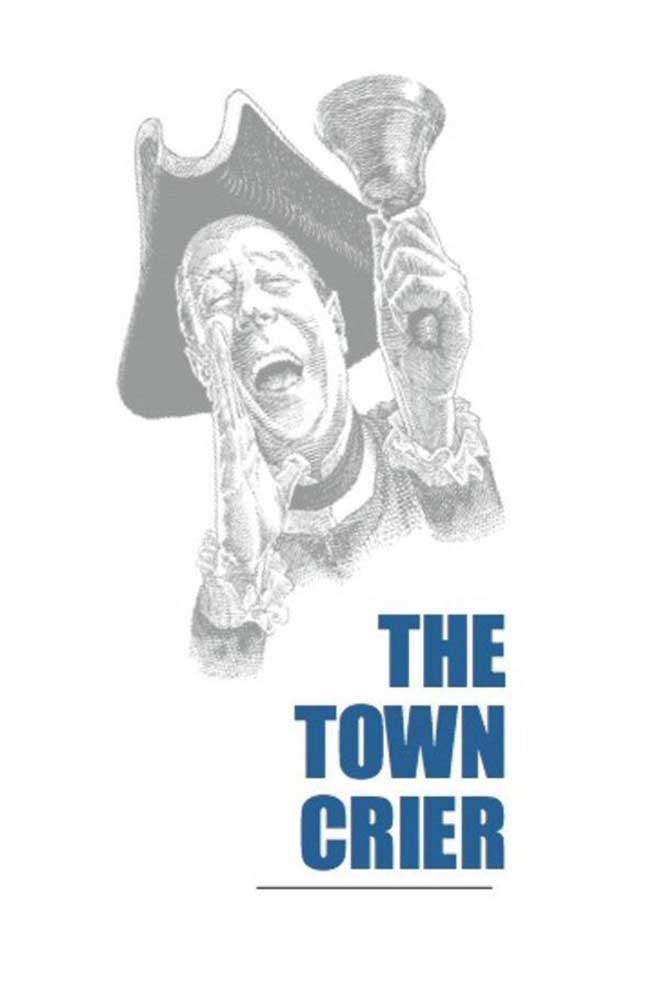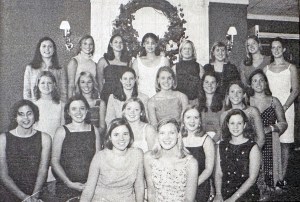The Town Crier: Monster mate
Published 2:00 pm Monday, October 31, 2022

- The Town Crier
Monster movies have been all over the “scare-waves” in the October nights and there are none better than the old classics. There’s “Frankenstein,” “The Wolf Man,” “Dracula,” “The Mummy” and “The Invisible Man.” Throw in “The Phantom of the Opera” for good measure and you’ve got a “who’s who” lineup of the greats.
These monsters come back in sequels and remakes generation after generation. These male monsters get the fame and the biggest part of the movie poster, but, like great men, behind every great monster there’s a great woman. Er, monster woman. Uh, monster woman lady? Well, let’s hear it for the ladies and see what tricks or treats they have added to the monsters of the movies.
Trending
Frankenstein has been a star for more than 200 years when he first showed up in a novel bearing his name … written by a woman!
A great parable
Mary Shelley wrote the novel when she and several of her pals challenged each other to write a “ghost story.” Her tale became one of the first science fiction stories ever written.
In the story, Dr. Victor Frankenstein creates the monster, but in reality it was Shelley, a she, who created both the monster and the doctor.
Her story is a great parable and a questioning of what man should fool with and what happens if he tries to take on the work of God. If a man had written it, I bet it would have ended in a car chase.
Jump ahead to the 1930s and the first sound Frankenstein film was a huge success. In that film it was the doctor’s wife who played the “woman in danger,” a situation where too many monster movie misses find themselves, basically as props to rev up the chills.
Trending
But just a few years later the sequel brought the female monster into the title of the movie itself: “The Bride of Frankenstein.” Actress Elsa Lanchester played both Shelley in 1816 writing the novel and also the bride of the monster. The publicity for the film said things like “The Monster demands a mate!” and “More fearful than the Monster himself!”
Like a ghoulish Romeo and Juliet, the two are star-crossed lovers, or perhaps more like scar-crossed lovers, and things don’t turn out well. The monster was built from body parts including a grown man’s brain (albeit an “abnormal” criminal brain) but the bride was basically grown in a test-tube. When they meet she knows nothing but basic emotions, while he has been yearning for love for a long time. She screams at the sight of him and it’s all over but the lab blowing up.
Of course, there’s a second bride in this movie, Dr. Frankenstein’s bride, Mrs. Frankenstein. She plays an important part in the movie as well since the monster kidnaps her so the doctor will have to make him a girlfriend. With two brides, this also brings up the old saw of Frankenstein is the doctor and the monster.
As Frankenstein movies kept being made, the ladies got their turn in films like “Jesse James Meets Frankenstein’s Daughter,” “Frankenstein’s Daughter,” Mexican film “Santo Versus Frankenstein’s Daughter” and “Lady Frankenstein.” And in 1985 she got her own film, “The Bride.” The monster was in the film but it was all about her.
After new blood
When we first meet Dracula in the 1931 film starring Bela Lugosi as the famous count we see a quick scene where he has three brides of his own, victims who he turned into vampires. But he is after new blood in England because he’s basically overgrazed Transylvania. There are female victims in the film, but it’s pretty much up to the men to save the day.
When they filmed the Lugosi version in English, they filmed a Spanish language version simultaneously at night. Everyone agrees that the Mexican actress, Lupita Tovar, was a much more exciting lead than the wan English victim Helen Chandler.
The very next Dracula film was “Dracula’s Daughter,” with Dracula still staked out while a lady vampire takes over the biting. Drac’s daughter shows up and is trying to solve her vampiric tendencies with medical help. She’s the heroine, star and villain in the film, a pretty good turn for this lady.
Later there would be films like “Countess Dracula,” which wasn’t actually a lady Dracula but was based on the true story of Countess Bathory of Hungary, evidently a serial killer rather than a supernatural something or other.
And there was “The Brides of Dracula,” which featured the ladies but no actual Dracula. Once again, the count kicked things off but the countesses got their time to shine.
Looking for a reincarnated sweetie
Boris Karloff was a big hit and an instant star after playing the monster of Frankenstein and so was put straight into the next monster movies the studio made. One of those was “The Mummy,” inspired by the recent discovery of King Tut’s tomb in Egypt. All things ancient Egyptian were the rage back then, so why not a scary story?
The Boris Karloff Mummy movie kicked off a series of sequels, most of which carried on the main story idea of Karloff’s character, Im-Ho-Tep, being executed back in the bad old days for sacrilege and being brought back to life 3,000 years later thinking he’s found his old girlfriend reincarnated.
Later in the series, the mummy’s name was Kharis when played by Lon Chaney Jr., but he was still looking for a reincarnated sweetie.
In the mummy movies the female lead was the key to the whole thing. Without actresses Zita Johann or Ramsay Ames, the mummy would have just remained snoozing in his golden sleeping bag and there wouldn’t have been a movie.
In a series of sequels in the 1990s it was the same idea, and in a recent remake with Tom Cruise they flipped the gender and the mummy that came back was a female. In all the cases, it was the female that is responsible for the mummy’s plot actions.
The next sensation
In 1941, 10 years after Dracula and Frankenstein had kicked off the horror movie craze, Universal Studios was looking for a new monster to start the next sensation. Before you can howl at the full moon they had come up with “The Wolf man,” starring Lon Chaney Jr. His dad, Chaney Sr., had passed away but was still remembered as the Phantom of the Opera,” the Hunchback of Notre Dame” and many other monsters and madmen. By including Jr. in “The Wolf Man” they added a pedigree to the monster that ensured success.
The other thing that ensured its success? A leading lady! Evelyn Ankers was chosen to be the lady that loves the wolf and she was no stranger to the strange. After “The Wolf Man” she appeared in “Ghost of Frankenstein,” “Captive Wild Woman,” “Son of Dracula,” “The Mad Ghoul,” “The Weird Woman,” “Jungle Woman” and “The Invisible Man’s Revenge.” As you can see from her monster movie career, “woman” was used frequently and brought in the fans.
In “The Wolf Man,” the legend says that only someone who loves a werewolf can kill them. In this film, it’s Larry Talbot’s (Chaney’s character) father that kills him. But in one of the four sequels, “The House of Frankenstein,” it’s the girl who loves him that puts an end to his curse and his attacks.
There’s also another female in a few of the Wolf Man films that plays a key and memorable role. The actor’s name is Maria Ouspenskaya playing the gypsy woman Maleva, who knows about the curse, since her son is a werewolf played by Lugosi. Maleva recites certain poems to put the dead “wolves” to rest after they are killed forever (or until the next sequel, whichever comes first). Between his love and the gypsy woman, the Wolf Man has plenty of women hunting him.
As these horror films did well and more and more were produced, Hollywood soon discovered that indeed, the women could be monstrous at the box office, too. In the classic days it wasn’t long until you could line up to see films like “Captive Wild Woman” and its two sequels, “Jungle Woman” and “The Jungle Captive.” These films follow the tragic life of a gorilla named Cheela that is turned into a woman (sometimes) in a type of reverse “wolf man” story.
Continuing, there was “The Lady and The Monster,” “The Devil Bat’s Daughter,” “She-Wolf of London” and “The Spider Woman Strikes Back.”
Then, years after “The Bride of Frankenstein,” the bride came back into vogue with “Bride of the Gorilla,” “Bride of the Monster” and “The Bride and The Beast.” Also lighting up the movie marquees was “The She Beast,” “Voodoo Woman,” “Daughter of Dr. Jekyll and “Mother Riley Meets the Vampire.” That last one is a bit of a fake-out, though, as the character of Mother Riley was actually a character portrayed by British male actor Arthur Lucan in drag as an old lady. But what does it say that by the 1950s even men were wanting to join the “women in horror films” monster party?
This Halloween, while looking for a scary, old film to watch, don’t forget that in almost every horror film there’s a female character without which the whole movie would fall apart. When the clock strikes midnight, it won’t be Cinderella running through the night!




